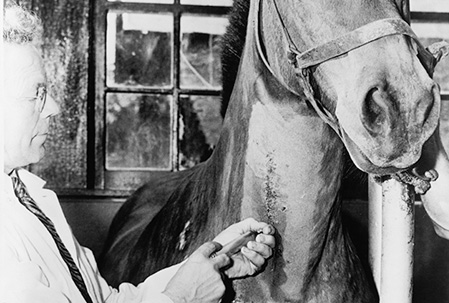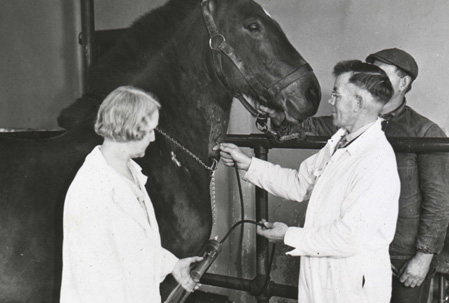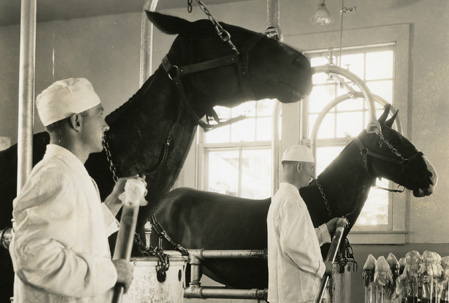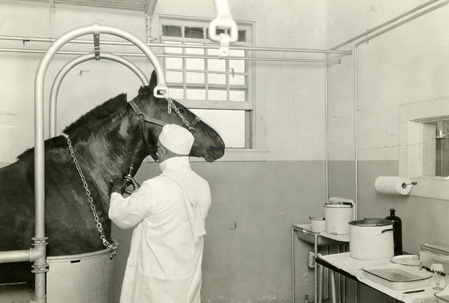Injecting a horse with diphtheria toxin, New York City Health Department, 1940s
Courtesy Library of Congress
Large animals like horses were essential to produce the quantities of serum needed to supply the population.

Bleeding a horse for antitoxin production, 1940s, New York City Health Department, 1940s
Courtesy National Museum of American History

Collecting blood from horses for antitoxin production, Parke, Davis & Company, ca. 1925
Courtesy National Museum of American History

Injecting a horse with diphtheria toxin, Parke, Davis & Company, ca. 1925
Courtesy National Museum of American History
